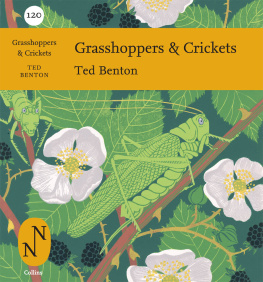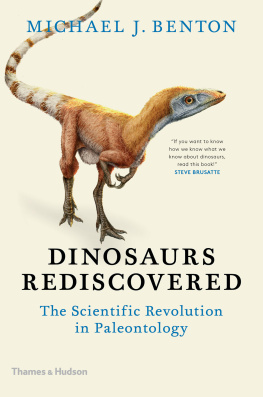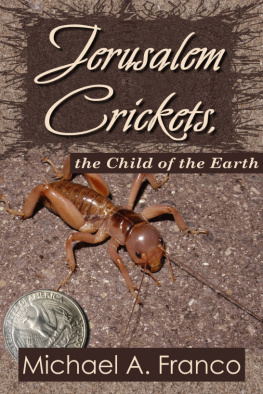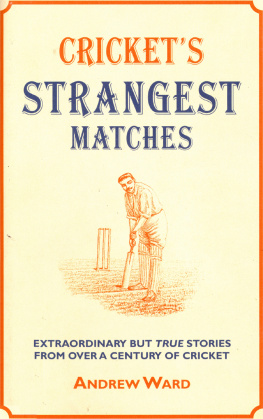Contents
Following his earlier New Naturalist, Bumblebees, we are delighted that Ted Benton has shared his enthusiasm for another familiar and well-loved group of insects that contribute greatly to the sights and sounds of summer grasshoppers and crickets. As well as dealing with identification, he considers the natural history of the British species and their conservation, and discusses their distribution, their polymorphisms and the timing of their life history stages in relation to the changing climate. He shows how studies of their bizarre behaviour contribute to our understanding of the evolution of reproductive strategies, and illustrates their songs and dances in the accompanying DVD, an innovation for this series. The fruit of many years of careful observation, photography, filming and recording, this book will surely bring many fresh converts to the study of Orthoptera.
EDITORS
SARAH A. CORBET, S C D
P ROF . RICHARD WEST, S C D, FRS, FGS
DAVID STREETER, MBE, FIB IOL
JIM FLEGG, OBE, FIH ORT
P ROF . JONATHAN SILVERTOWN
The aim of this series is to interest the general reader in the wildlife of Britain by recapturing the enquiring spirit of the old naturalists. The editors believe that the natural pride of the British public in the native flora and fauna, to which must be added concern for their conservation, is best fostered by maintaining a high standard of accuracy combined with clarity of exposition in presenting the results of modern scientific research.
And here, if you like, the Cricket DID chime in! The kettle had had the last of its solo performance. It persevered with undiminished ardour; but the cricket took first fiddle and kept it. Good Heaven, how it chirped! Its shrill, sharp, piercing voice resounded through the house, and seemed to twinkle in the outer darkness like a star Yet they went very well together, the Cricket and the kettle. The burden of the song was still the same; and louder, louder, louder still they sang it in their emulation There was all the excitement of a race about it. Chirp, chirp, chirp! Cricket a mile ahead. Hum, hum, hum-m-m! Kettle making play in the distance like a great top. (Dickens, 2004 [1845])
Many of Dickenss readers would have recognised from their own experience his description of the singing of the cricket on the hearth. Unfortunately this once-familiar songster is now rarely heard, except, perhaps, in the homes of keepers of reptiles, who use them to feed their pets. However, another group of insects, the grasshoppers, continue to contribute their songs to the soundscape of the British summer. Although the use of sound for communication is not universal among grasshoppers, crickets and their allies, it is very widespread. And it is this feature that above all others attracts the attention of passers-by, as well as poets, musicians and scientists. An ear-opening introduction to contemporary creative uses of insect sounds can be accessed from the website www.pestival.org, a festival celebrating insects in art and the art of being an insect. Particularly interesting is Chris Watsons installation whispering in the leaves at the Royal Botanical Gardens, Kew (for related events and recordings, visit: www.chriswatson.net).
Scientists have been interested in the nature of the insects musical instruments, the messages they communicate in their songs, and the responses of .
The songs of crickets and bush-crickets, especially, have proved so attractive in some cultures, notably in China and Japan, that these insects are caged and kept for their song (Jin, 1994, in Gwynne, 2001; Pemberton, 1990). In China, not only is there a long tradition of breeding crickets that are selected for their aggression and fighting ability (Jin & Yen, 1998), but they were also a symbol of fecundity (Meng, 1993, in Gwynne, 2001). Elsewhere, grasshoppers and crickets are assigned a great variety of other symbolic meanings. According to Kevan (1979) species of bush-crickets were feared in Navaho native American culture as they were thought to be associated with spirits and attracted to corpses. The great Cuban dancer, Carlos Acosta, tells us that while he was a disruptive schoolboy his father had told him of a dream.
Last night I had a magnificent dream You were dancing in a majestic theatre in another country and suddenly a cricket landed on your shoulders Dont you realise, the cricket represents hope. It means you are going to be great one day. (Acosta, 2007: 76)
In stark contrast, Arundhati Roy uses the image of swarms of grasshoppers as an omen of genocide. She reports the account given by a friend of the sole survivor of the massacre of Armenians that took place in Anatolia in 1915.
She was ten years old in 1915. She remembered the swarms of grasshoppers that arrived in her village, Dubne, which was north of the historic Armenian city of Dikranagert, now Diyarbakir. The village elders were alarmed, she said, because they knew in their bones that the grasshoppers were a bad omen. They were right; the end came in a few months, when the wheat in the fields was ready for harvesting. (Roy, 2009: 1334)
A rather different moral is perpetuated in the story of the ant and the cicada, originally told by Aesop, but later transmuted into the encounter of ant and grasshopper. Either way, the message is the same: the grasshopper/cicada spends the summer in song, with no thought of tomorrow, while the industrious ant makes preparation for the bitter weather to come. Then, the destitute songster comes to beg or borrow from the ant, who replies: You used to sing! Im glad to know it. Well, try dancing for a change (Fabre, 1917: 1). Not every commentator finds the moral of this tale convincing. Fabre disputes its claims on behalf of the ant, while, in one of his short stories, Somerset Maugham (1963: 1014) declares: I could never quite reconcile myself to the lesson. My sympathies were with the grasshopper and for some time I never saw an ant without putting my foot on it. To underline the point, the story goes on to describe the contrasting lives of two brothers, Tom, a carefree and disgraceful hedonist, and George, a hard-working, prudent and faithful husband and father. Just as George is expecting to get his reward and watch the descent of his profligate brother into the gutter, Tom marries a rich and elderly lady, who dies and leaves him everything.
Visitors to the City of London might be surprised to see a number of representations of grasshoppers distributed in this citadel of international finance: on the weather vane and embossed on a wall of the Royal Exchange, and suspended over the pavement in Lombard Street. In apparent defiance of the fabled image of the grasshopper as hedonistic songster, these representations refer us to the long association of the Gresham family with finance and banking. Perhaps the best-known Gresham is Sir Thomas (151971), merchant and financier, and financial agent to several English monarchs, including Elizabeth I. He was founder of the Royal Exchange, and his legacy was devoted to the establishment of Gresham College. The grasshopper motif figures above the Gresham family coat of arms, and legend has it that the founder of the family, Roger de Gresham, was abandoned as a new-born baby in long grass, only to be discovered by a woman whose attention was drawn to him by a grasshopper. The grasshopper motif is to be found on the exchange in Boston, in the bar of the spectacular art nouveau Gresham Palace in Budapest (originally owned and commissioned by the Gresham Life Assurance Company), in the car park of Gresham House in Cambridge, and elsewhere. Apparently, in the system of English heraldry the grasshopper symbolised wisdom and nobility. In view of our current experience of the financial services, perhaps the original association of the grasshopper with short-term profligacy might be reinstated!


















